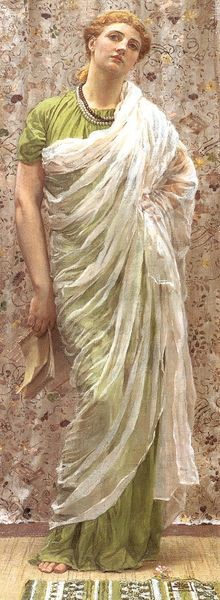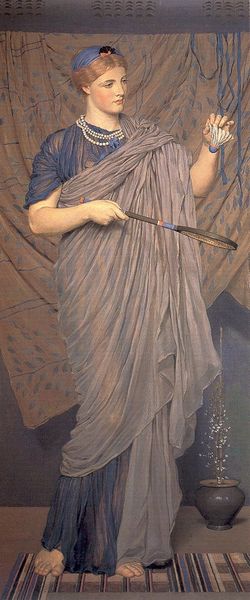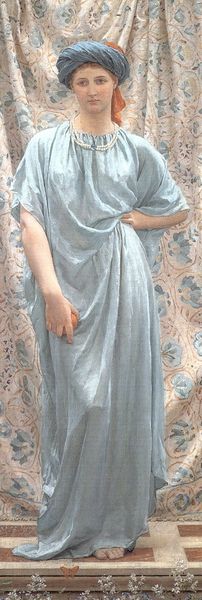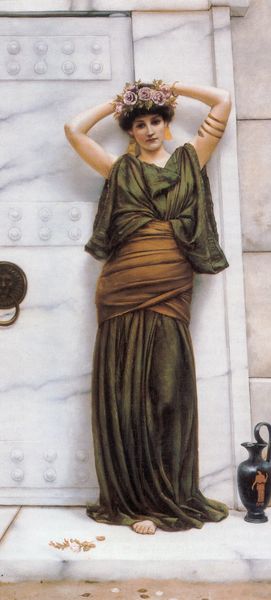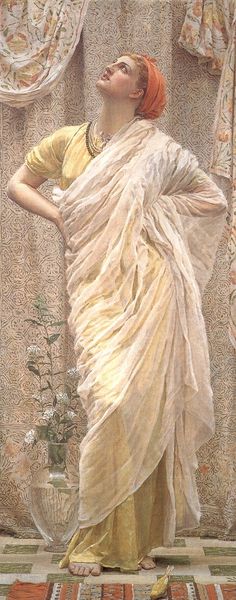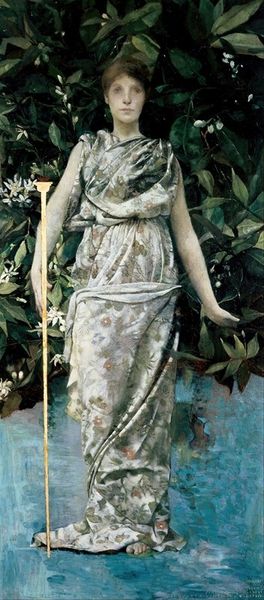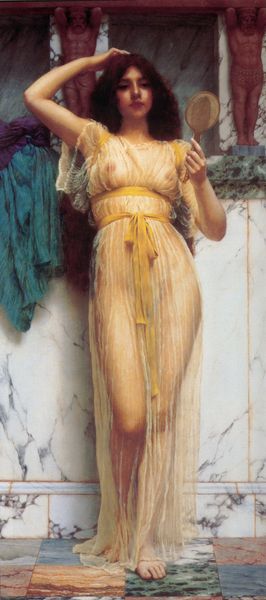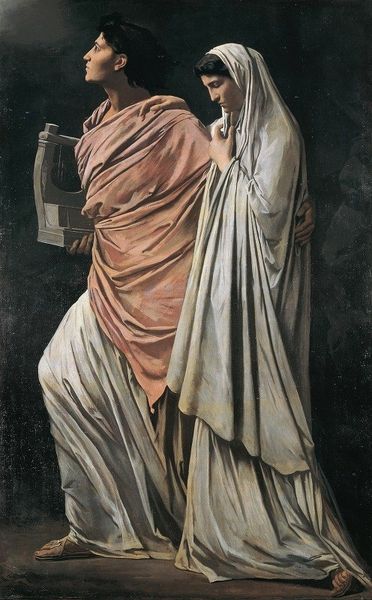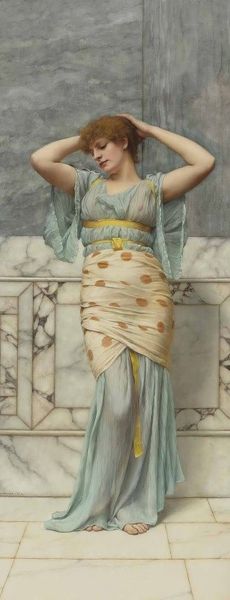
painting, oil-paint
#
painting
#
oil-paint
#
painted
#
figuration
#
oil painting
#
aesthetic-movement
#
genre-painting
#
lady
#
dress
#
realism
Copyright: Public domain
Editor: This is Albert Joseph Moore’s "Battledore," created around 1870 using oil paint. I'm struck by how the cool blues and greens create such a serene, almost dreamlike atmosphere. The textures also seem incredibly important. What compositional elements really stand out to you in this painting? Curator: Formally, I find the layering of planes—the rug, the figure, the draped fabric behind her—creates a shallow but complex space. Consider the verticality imposed by the figure itself, countered by the horizontality of the fans above and rug below. These juxtapositions guide the eye. Do you observe any significant repetitions of form? Editor: I think I see it! The circular shapes of the fans, the apple on the ground, and even the jewel on her shoulder echo each other. Is this repetition significant? Curator: Indeed. The repetition establishes a visual rhythm, uniting the disparate elements. And observe the figure's draped garment. Its fluid lines contrast with the relative rigidity of the architectural elements, creating a dynamic tension. How does this tension affect your interpretation of the subject's gesture? Editor: I see what you mean about the tension. The draped fabric contrasts so sharply. Perhaps the woman's slight gesture of holding the battledore emphasizes the stillness, like she's suspended in time. Curator: Precisely! And the subdued palette, dominated by blues and greens, further enhances that sensation of arrested movement. It avoids high chroma which might interrupt your sensation of stasis, balance. Moore demonstrates a deep understanding of compositional relationships and their capacity to evoke specific moods. Editor: That’s a fascinating perspective. I’d focused on the color, but I hadn’t considered the formal arrangement quite so closely. It really makes the work more complex. Curator: Understanding these structural elements allows for a far richer interpretive experience. Focus on form.
Comments
No comments
Be the first to comment and join the conversation on the ultimate creative platform.
